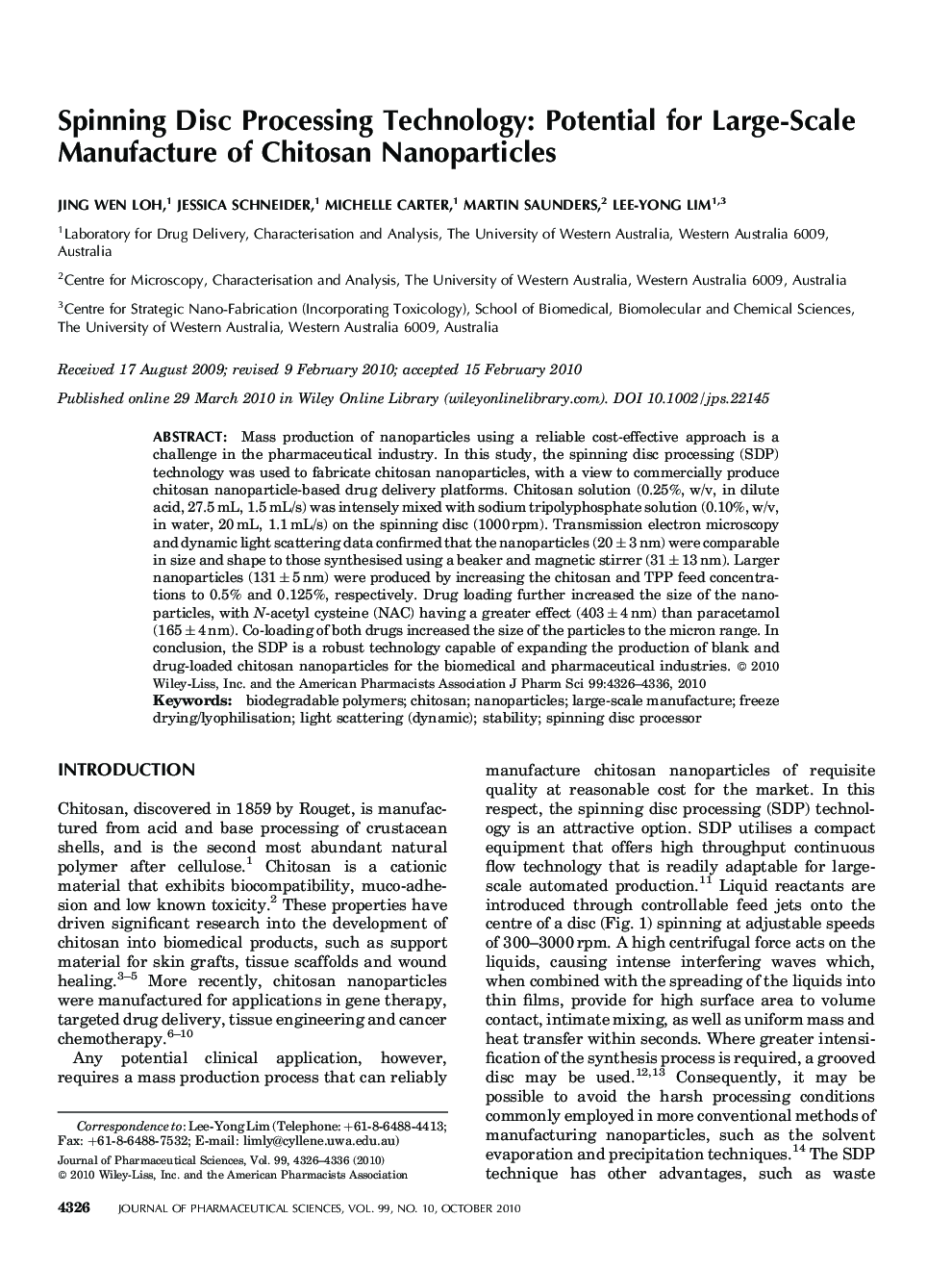| Article ID | Journal | Published Year | Pages | File Type |
|---|---|---|---|---|
| 2487072 | Journal of Pharmaceutical Sciences | 2010 | 11 Pages |
Abstract
Mass production of nanoparticles using a reliable cost-effective approach is a challenge in the pharmaceutical industry. In this study, the spinning disc processing (SDP) technology was used to fabricate chitosan nanoparticles, with a view to commercially produce chitosan nanoparticle-based drug delivery platforms. Chitosan solution (0.25%, w/v, in dilute acid, 27.5 mL, 1.5 mL/s) was intensely mixed with sodium tripolyphosphate solution (0.10%, w/v, in water, 20mL, 1.1mL/s) on the spinning disc (1000rpm). Transmission electron microscopy and dynamic light scattering data confirmed that the nanoparticles (20 ± 3 nm) were comparable in size and shape to those synthesised using a beaker and magnetic stirrer (31 ± 13 nm). Larger nanoparticles (131 ± 5 nm) were produced by increasing the chitosan and TPP feed concentrations to 0.5% and 0.125%, respectively. Drug loading further increased the size of the nanoparticles, with N-acetyl cysteine (NAC) having a greater effect (403 ± 4 nm) than paracetamol (165 ± 4 nm). Co-loading of both drugs increased the size of the particles to the micron range. In conclusion, the SDP is a robust technology capable of expanding the production of blank and drug-loaded chitosan nanoparticles for the biomedical and pharmaceutical industries.
Related Topics
Health Sciences
Pharmacology, Toxicology and Pharmaceutical Science
Drug Discovery
Authors
Jing Wen Loh, Jessica Schneider, Michelle Carter, Martin Saunders, Lee-Yong Lim,
